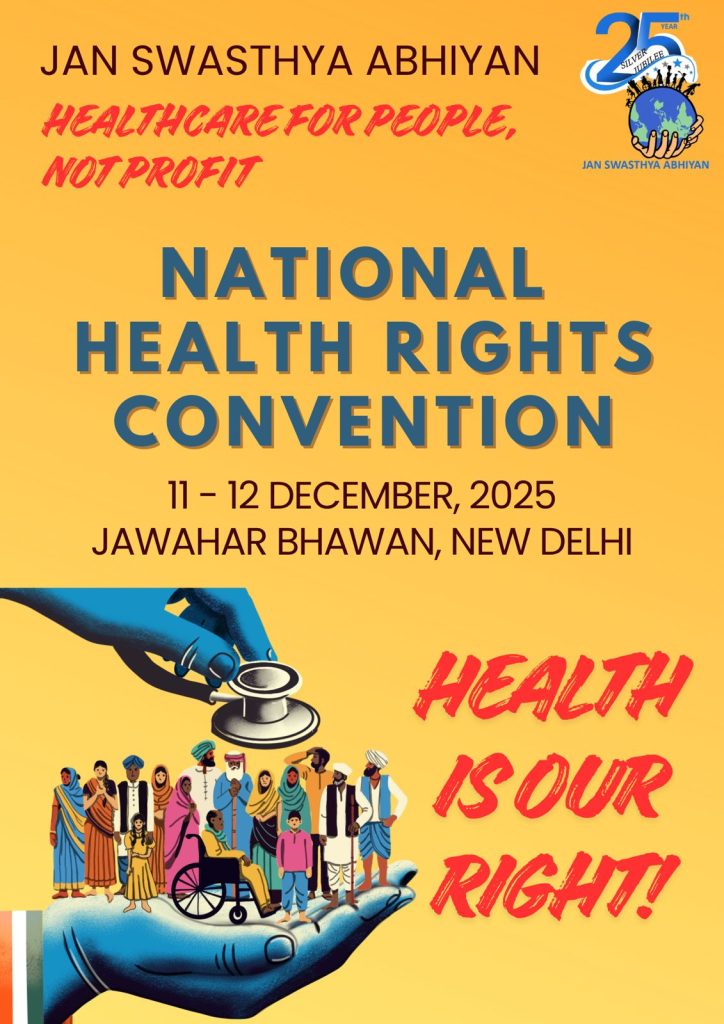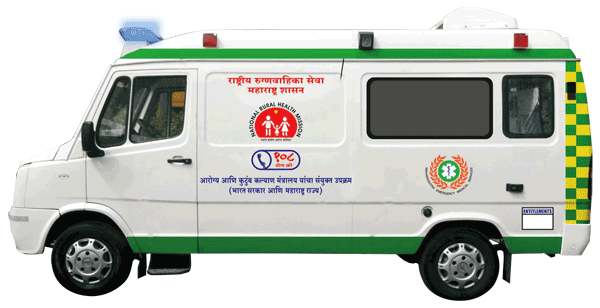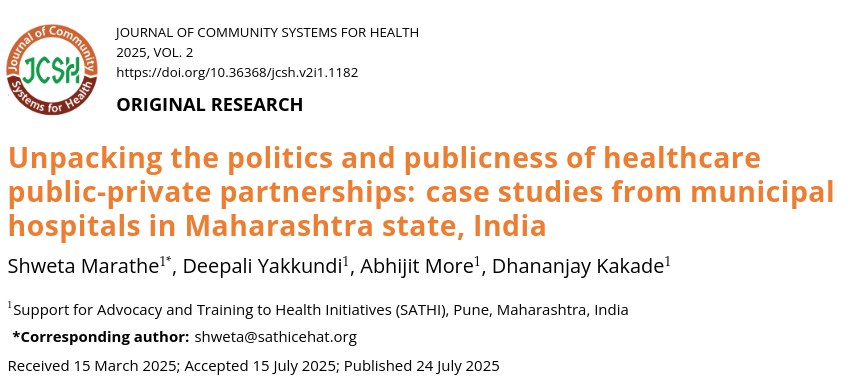Over the last two decades, Public-Private Partnerships (PPPs) have become a common strategy by governments across India, for promoting access to healthcare by tapping into private across resources. While PPP projects are frequently announced in cities, little is known about how these partnerships actually function at the municipal level. How are decisions made? Who are the key actors? What systems are in place to ensure accountability and service delivery? At SATHI we conducted a study in 2023-24 to examine hospital-based PPPs for clinical and diagnostic services in secondary and tertiary public hospitals, based in two major cities of Maharashtra. This involved 25 in-depth interviews, facility mapping, some data from official municipal sources, and technical document review. Addressing a critical knowledge gap, this study has analysed public-private dynamics, decision-making processes, operational challenges, and the overall impact of PPPs on healthcare delivery in such large cities. Key points regarding hospital-based PPPs in two large cities of Maharashtra Here we present five striking case stories drawn from this study, offering insights into how hospital-based PPPs operate, where they falter, and what are their implications for public healthcare. Case Story 1: Critical care or critical failure? – PPP for ICU services at tertiary care public hospital In 2011–12, a municipal corporation invested ₹55 lakhs to set up an ICU in a tertiary public hospital, including purchase of expensive equipment and engaging five contractual doctors. However, the ICU never became functional and remained idle for nearly a decade. It was later handed over to a private consultancy firm—reportedly linked to a local corporator—under a 30-year PPP, despite the firm having no healthcare or ICU experience. All earlier equipment was scrapped, and new materials were procured again by the corporation for the private agency. The PPP offered generous terms: rent-free use of the hospital’s first floor, free electricity and water, and new equipment. In return, the agency was to provide ICU services at 1% below CGHS rates. Yet costs have remained prohibitive: patients have to deposit over ₹40,000 and then pay ₹4,000–₹5,000 daily. Many are also forced to buy medicines at MRP from the ICU pharmacy, despite a Jan Aushadhi outlet offering cheaper alternatives on the hospital campus. The facility has been staffed with part-time, on-call doctors—often homeopathy or ayurveda practitioners—rather than full-time qualified intensivists. The ICU manager, with only a basic degree, was a relative of the corporator associated with the project. Despite its promise of improving access to critical care, the ICU has admitted on average only around 40 patients per month. Most serious cases were referred to the city’s only large public hospital due to the lack of full-time, qualified staff—undermining the core objective of the PPP. This case exposes how a PPP intended to expand critical care access, instead has enabled political favouritism and private interests. Despite generous public subsidies—free space, utilities, and equipment—the ICU has remained inaccessible to many due to high charges, underqualified staff, and inadequate care. Case Story 2: A ₹50-Crore hospital, barely functional and engaged in further sub-contracting In November 2022, under a 28-year PPP, the Municipal Corporation handed over a newly constructed multispecialty hospital—valued at ₹50 crores—to a private agency run by a healthcare trust. The 25,000 sq. ft. facility was provided rent-free, along with free utilities, tax exemptions, and most of the equipment. Originally designed as a five-storey, 76-bed facility offering ICU, catheterisation lab, dialysis, CT scan, OPD, and emergency care, the project appeared promising on paper. It was inaugurated twice—first in February 2022 ahead of local elections, and again in December 2022. Yet, even two years after inauguration, most services remained non-functional. Basic facilities like X-ray and essential medicines were unavailable. The absence of antivenom tragically led to the death of a snakebite patient. The hospital operates with only two full-time doctors and one or two nurses per shift. Most specialists were found to be unavailable or on-call only with prior appointments. The administrator was reportedly a 12th standard-pass relative of the corporator who had pushed for the PPP. Three major services—CT scan, pathology, and dialysis—were further subcontracted by the trust foundation to additional private agencies, further blurring responsibility and accountability. Occupancy of the hospital has remained dismal- one IPD admission per week and just 4–5 OPD patients daily. Locals largely avoid the hospital, citing poor services and frequent referrals to other facilities. Although rates were set at 4.5% below CGHS norms, but with so few services available, cost was hardly the issue. The agreement allowed for performance reviews only once in every seven years. Many residents were unaware of the hospital’s existence until local activists demanded visible signage—which was installed only recently. It is deeply troubling that while city’s only large public hospital is overwhelmed with patients, a well -equipped municipal hospital worth ₹50 crores remains nearly non-functional due to a PPP arrangement. This is not just inefficiency, but amounts to stark failure of the PPP model. Case Story 3: Outsourcing diagnostics: Efficiency without accountability and equity? In January 2018, the municipal corporation entered into a 10-year public-private partnership with a pan-India diagnostics chain known for aggressive expansion via government contracts. As part of the deal, the entire ground floor of a public maternity hospital was handed over to this diagnostics firm —for just ₹1 a year in rent. The main municipal hospital now operates from the rear building, quite literally pushed into the background. Electricity and water were also provided free under the PPP. On paper, this facility offers a full suite of diagnostics—MRI, CT, and pathology—at rates 6% below CGHS. The lab was staffed with 64 personnel including doctors, technicians, admin, and housekeeping, all appointed by the agency. Today, the centre handles around 400–600 pathology tests, 30 MRIs, and 15 CT scans daily. But even this seemingly successful PPP has serious gaps. MRI and CT services remained non-functional for two years due to delayed electrical work by municipality, which highlights a breach of contractual obligations and a lack of accountability from both the corporation and the private agency. Grievance redressal systems










